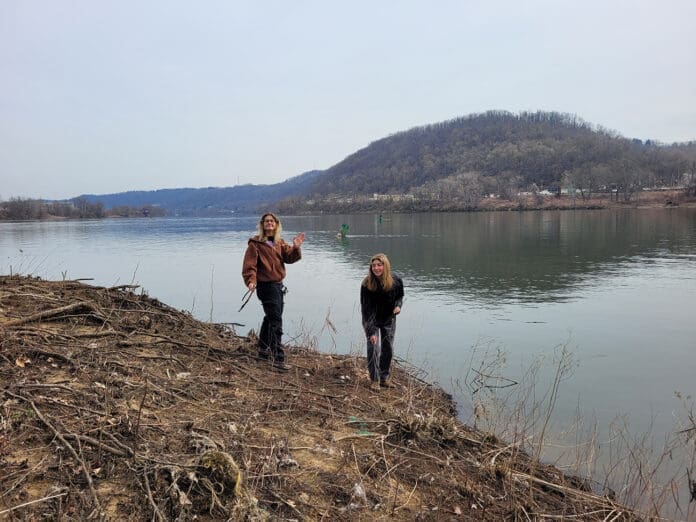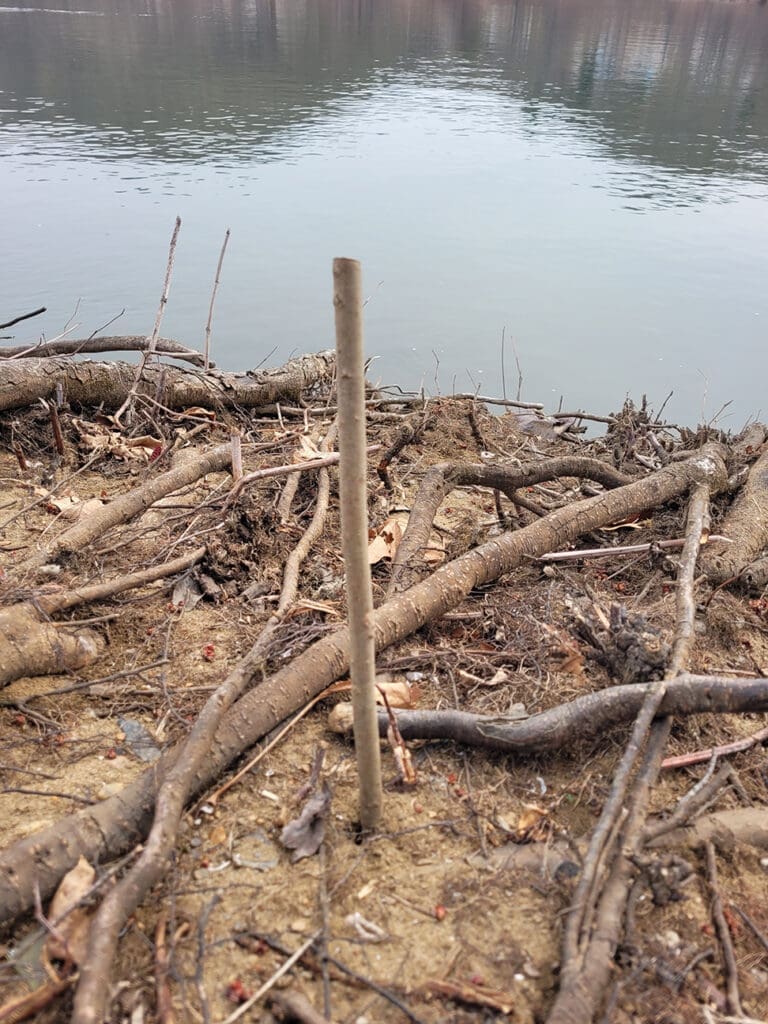
WEST LIBERTY, W.Va., March 26, 2025 – West Liberty University (WLU) biology students recently continued a long-term restoration project by planting trees and removing trash on the northern tip of Wheeling Island, an Ohio River Islands National Wildlife Refuge.
Twelve WLU biology students, led by WLU Associate Professor of Biology Dr. James Wood and U.S. Fish and Wildlife Service Wildlife Refuge Specialist Victor Elam, planted 150 Sandbar Willows at the head of the island through the process of live staking. The willows are a beneficial native species of small tree that grow quickly and help prevent erosion with their interlocking roots. They also provide habitat for birds and other wildlife. Additionally, the students collected and removed a pickup truck load of garbage and debris left behind from last year’s flooding.
As Dr. Wood explains, human and industrial activity have negatively impacted fragile areas like the refuge on Wheeling Island.

“The locks and dams built in the 1950s and 1960s to accommodate barge traffic have raised the Ohio River almost 20 feet above its natural level in some places,” explains Wood. “Unfortunately, the higher water level and waves caused by boats have caused significant erosion along the shorelines. Replanting native plants along the shoreline helps protect the island for future generations,” he adds.
The Wheeling Island Ohio River Islands National Wildlife Refuge supports a variety of aquatic life, including freshwater mussels, which are currently being studied and monitored by the U.S. Fish and Wildlife Service. Restoration projects help to counteract the damage caused by erosion and preserve vital ecological areas within our local waterways.
Dr. Wood elaborates on how projects like this benefit students and impact the community.
“Service projects like this bring topics we talk about in class into the real world. They are great experiential learning opportunities for students and create a way to give back to the local community,” Wood said. “Universities have the dual goal of training tomorrow’s leaders and supporting the community. I am proud that WLU could partner with the U.S. Fish and Wildlife Service to give our students a unique learning experience, help restore the island’s wildlife, and make Wheeling a better place to live,” he adds.
Future service projects planned for Dr. Wood’s classes include removing invasive plant species to restore the forests at Oglebay Park and planting native trees to help beautify WLU’s campus.
More about The Ohio River Islands National Wildlife Refuge:
The Ohio River Islands National Wildlife Refuge was established in 1990 to protect, conserve, and restore habitat for wildlife native to the river and its floodplain. Most of the refuge’s 3440 acres of land and underwater habitat are located in West Virginia, with Pennsylvania and Kentucky each having two refuge islands. The refuge is important in conserving the “wild” Ohio within one of our nation’s busiest inland waterways. Learn more at fws.gov/refuge/ohio-river-islands.
More about West Liberty University’s Department of Biological Sciences:
West Liberty University’s Department of Biological Sciences is where opportunity meets excellence through hands-on research, experiential learning, and unique opportunities in both undergraduate and graduate programs. Students are guided by renowned professors with one-on-one instruction and gain essential skills for success in a variety of biological fields. Learn more at westliberty.edu/biology.

